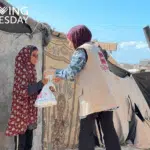Climate Resilient Livelihoods: 2025’s Ultimate Hope
Why Climate-Resilient Livelihoods Hold the Key to Breaking the Poverty Cycle
Climate resilient livelihoods are sustainable ways of earning income that help communities anticipate, adapt to, and recover from climate shocks while maintaining their capabilities and assets for the future. These approaches combine:
- Anticipation: Using climate forecasts and early warning systems
- Adaptation: Diversifying crops, income sources, and skills
- Absorption: Building capacity to withstand droughts, floods, and storms
- Recovery: Maintaining assets and rebuilding quickly after climate events
- Change: Shifting to new, sustainable practices when needed
When 35-year-old Jashim was forced to migrate from his coastal village in Bangladesh due to river erosion, he thought he’d never return home. But through a climate-resilient livelihood project that introduced sustainable fish farming, he not only came back – he brought his wife into the work and found dignity again.
This story isn’t unique. Two-thirds of the world’s extreme poor rely on agriculture for their survival, making them incredibly vulnerable to climate change. Yet these same communities contribute just 5 percent of global greenhouse gas emissions from farming. They face the biggest impacts while causing the least harm.
Climate-resilient livelihoods matter because they break this unfair cycle. They help vulnerable families move from just surviving to actually thriving, even when the weather becomes unpredictable.
Through our work at UMR, we’ve witnessed how strategic climate-resilient livelihood programs can truly transform communities. This creates a vital ripple effect, from empowering individuals to fostering regional stability. Our data-driven approach to storytelling highlights that the most impactful narratives come from projects that skillfully combine immediate relief with lasting climate-resilient solutions.
Easy climate resilient livelihoods glossary:
What Are Climate-Resilient Livelihoods and Why Do They Matter?
Imagine a farming family that doesn’t just survive droughts—they thrive through them. They’ve diversified their crops, learned water-saving techniques, and even started a small beekeeping business. When climate challenges hit, they don’t lose everything. Instead, they bounce back stronger. This is what climate resilient livelihoods look like in action.
At its heart, a climate resilient livelihood gives people the power to anticipate what’s coming, absorb the shock when it hits, and reshape their future for the better. It’s about having the right mix of skills, resources, and support systems to not just weather the storm, but to build something better on the other side.
For the world’s most vulnerable communities, this isn’t just nice to have—it’s a matter of survival. Here’s a sobering fact: two-thirds of the world’s extreme poor depend on agriculture for their daily bread. These are often the same families facing the harshest impacts of climate change, despite contributing almost nothing to the problem.
When we talk about climate resilient livelihoods, we’re really talking about justice. It’s about giving these communities the tools they need to break free from the cycle of poverty and climate vulnerability that traps so many families.
These efforts directly support three crucial Sustainable Development Goals. SDG 1: No Poverty gets a boost when families have stable, diversified income streams that don’t disappear with the next drought. SDG 2: Zero Hunger becomes achievable when communities grow climate-smart crops and maintain food security year-round. And SDG 13: Climate Action happens naturally as these communities adopt practices that help both them and the planet.
More info about Food Security and Livelihood.
The Goal: Beyond Survival to Sustainable Prosperity
Too many families spend their days just trying to make it through. One bad season, one unexpected storm, and they’re back to square one—or worse. Climate-resilient livelihoods change this entire equation.
Instead of constantly reacting to crisis after crisis, families learn to build long-term security. They develop multiple income sources, so if one fails, others keep them afloat. They ensure food and income stability throughout the year, not just during good seasons. Most importantly, they prevent asset loss—keeping the livestock, tools, and savings that took years to build.
This change happens when we empower communities with the right knowledge and resources. Take our work in Bangladesh, where climate-vulnerable women receive direct financial support for climate-adaptive livelihoods, along with training, planning help, and connections to markets. It’s not just about giving money—it’s about building complete support systems.
One of the most powerful outcomes is reducing forced migration. When people can make a good living at home, they don’t have to leave their families and communities behind. Our ICBAAR project in Bangladesh brought ‘Sorjone Fish Culture’ to previously unusable land, creating opportunities for over 10,000 households. Many people who had been forced to migrate could finally return home with dignity.
The Co-Benefits: A Healthier Planet and People
Here’s the beautiful thing about climate resilient livelihoods—they create a win-win situation for people and the planet. While helping families earn better incomes, these approaches also use low-emission practices that actually help fight climate change.
It’s worth remembering that smallholder farmers produce just 5% of global greenhouse gas emissions from agriculture. Yet every small reduction adds up. In Bolivia’s Kanata Metropolitan Area, our water management and organic waste processing strategies cut 93.42 tons of CO2 emissions. That’s the kind of local action that creates global impact.
The environmental benefits keep growing. Biodiversity conservation happens naturally when communities maintain seed banks with indigenous, climate-resistant crops. Improved nutrition comes from home gardens—like the ones 703 households established in Uganda—and nutrient-rich crops like the orange maize we promote in Zambia.
Water conservation becomes a way of life through techniques like solar-powered irrigation in Malawi, which transformed agricultural potential for 320 farming households. In Pakistan, communities use traditional glacier grafting (‘Gang Khswa’), while in India, water harvesting pits called ‘doba’ capture precious rainfall.
Ecosystem restoration happens through reforestation, mangrove planting, and using biochar from energy-efficient cookstoves to heal damaged soil. These integrated approaches create what we love to see—a positive cycle where resilient livelihoods lead to a healthier planet, which supports even stronger communities.
The Building Blocks of Climate Resilience
When Maria first started farming in her small village in Guatemala, she never imagined that changing weather patterns would force her to completely rethink how she grew food for her family. But like millions of farmers worldwide, she found that building climate-resilient livelihoods isn’t about having one perfect solution—it’s about weaving together multiple strategies that work as a connected whole.
Building climate-resilient livelihoods requires what we call a holistic approach. Think of it like building a house: you can’t just focus on the roof and ignore the foundation. Every element—from how communities manage their water to how they access markets—needs to work together. This means looking at environmental challenges alongside social needs and economic opportunities, recognizing that they’re all deeply connected.
At UMR, we’ve learned that the most successful projects use integrated resource management and systems-based adaptation. This means we don’t just help a farmer switch to drought-resistant seeds and call it done. We also look at how they can access clean water, connect to markets, and work with local governments to create lasting change.
For communities serious about building resilience, this comprehensive approach becomes their roadmap to a more secure future, showing exactly how different interventions can reinforce each other for maximum impact.
Key Elements of Climate Resilient Livelihoods
What transforms a struggling livelihood into a resilient one? Through years of working with communities around the world, we’ve identified several critical building blocks that consistently make the difference.
Income diversification stands out as one of the most powerful tools. When smallholder farmers in Vietnam started beekeeping alongside their traditional crops, they didn’t just add a new income stream—they created a safety net. Similarly, around 400 coffee producers in Nicaragua learned to grow cocoa through Soppexcca, giving them options when coffee prices dropped or weather patterns shifted.
The change can be remarkable. In Resinga, India, households that added mushroom cultivation to their farming activities earned a net profit of Rs 36,000 per month. That’s not just extra income—that’s life-changing money that allows families to invest in their children’s education and their community’s future.
Improved productivity through climate-smart agriculture forms another crucial pillar. This isn’t about working harder; it’s about working smarter. Communities in Indonesia and Zambia have adopted drought-resistant seeds that can survive dry spells that would destroy traditional varieties. In India, farmers using organic farming methods not only see better yields but also improve their soil health for future seasons.
Water management innovations have revolutionized farming in some of the world’s most challenging environments. In Malawi, solar-powered irrigation systems allowed 320 farming households to grow crops year-round, completely changing their agricultural potential. The ‘Panchgadiya’ rainwater harvesting system in India captures precious monsoon water for use during dry months. Peru’s Glaciares+ project manages water resources from over 200 glacial lakes, turning climate challenges into opportunities.
Green energy solutions create ripple effects throughout entire communities. When 1,500 people in Mchinji, Malawi gained access to renewable energy, they didn’t just get lights—they gained the ability to process crops after dark, store food safely, and develop new businesses. In Tanzania, Solar Sister reached 240 women entrepreneurs who now sell solar-powered products, directly benefiting 122,000 people with clean energy access.
The magic happens when communities can connect their improved production to better markets through value chain development. That cocoa venture in Nicaragua? It now has its own chocolate factory selling products nationally and winning awards. This shows how climate-resilient livelihoods can grow from survival strategies into thriving enterprises.
Integrating Local Knowledge and Traditional Practices
Some of the most powerful climate solutions have been hiding in plain sight for generations. Communities that have lived in harmony with their environment for centuries possess wisdom that no textbook can teach. Our role isn’t to replace this knowledge—it’s to help blend ancestral wisdom with modern tools and techniques.
In Pakistan’s Baltistan region, people have practiced ‘Gang Khswa’—glacier grafting—for water conservation long before climate change became a global concern. This traditional technique now helps communities adapt to changing precipitation patterns. In India, community seed banks preserve indigenous, climate-resilient crop varieties that have survived droughts and floods for hundreds of years.
The Sahel Region offers another beautiful example. Families there have long practiced ‘habbanaye,’ where they loan female animals to poorer community members. Development projects have adapted this traditional practice to improve resilience for pastoralist communities facing increasingly unpredictable weather.
When we respect and build upon existing knowledge systems, communities don’t just accept new practices—they accept them as natural extensions of what they already know works. This creates stronger, more sustainable solutions that communities truly own.
The Role of Women and Marginalized Groups in Climate Resilient Livelihoods
Here’s something we’ve learned from years of field work: when women thrive, entire communities become more resilient. Women often bear the brunt of climate impacts, but they’re also incredibly effective agents of change. They’re frequently the ones managing household resources, preserving traditional knowledge, and finding creative solutions when times get tough.
Empowering women entrepreneurs creates remarkable changes. Those 240 women entrepreneurs with Solar Sister in Tanzania didn’t just start businesses—they became community leaders bringing clean energy to 122,000 people. In Indonesia’s Land4Life project, 52 women-led enterprises are driving agroforestry efforts that restore landscapes while generating income.
Access to land and credit remains a persistent barrier that smart projects actively address. In northern Ghana, financial services now reach 14,500 smallholder farmers through custom products like low-interest loans with waived collateral requirements, specifically designed to include women who might otherwise be left out.
Leadership training and gender-responsive planning ensure that climate-resilient livelihoods strategies actually work for everyone. When women have a voice in community planning and decision-making, projects become more effective because they address real needs and build on existing strengths.
The evidence is clear: investing in women and marginalized groups isn’t just the right thing to do—it’s the smart thing to do. Their innovation and resilience create benefits that ripple through entire communities, making everyone more prepared for whatever climate challenges lie ahead.
More info about Livelihood Support for Vulnerable People.
Case Studies in Action: How Climate Resilient Livelihoods Transform Communities
When we talk about climate-resilient livelihoods, the real magic happens when we see theory transform into practice. At UMR, we witness how strategic interventions can spark incredible changes that ripple through entire communities. These aren’t just statistics on a report – they’re real families finding their footing in an uncertain world, finding economic independence they never thought possible.
The beauty of these changes lies in their simplicity. Often, it’s not about completely reinventing how people live, but rather building on their existing strengths and adding new tools to weather the storms – both literal and figurative.
Sweet Success: Adapting with Bees
Sometimes the smallest creatures can create the biggest changes. In Vietnam, smallholder farmers were watching their traditional crops struggle against increasingly unpredictable weather patterns. Droughts would be followed by sudden storms, leaving families wondering how they’d make ends meet from one season to the next.
That’s when beekeeping entered the picture. What started as an alternative income source quickly became something much more meaningful. These farmers weren’t just learning to tend hives – they were finding a climate-resilient livelihood that actually worked with nature instead of fighting against it.
The bees don’t just produce honey. They’re busy pollinating plants throughout the region, contributing to reforestation efforts that help the entire ecosystem bounce back stronger. When storms hit now, these farming families have a backup income that’s remarkably stable. The bees keep working, the honey keeps coming, and families keep thriving.
Rural Women Rising: Forging a New Path
In Zimbabwe, women farmers have long been the backbone of their communities, yet they’ve historically faced barriers that would discourage anyone. Limited access to land, scarce resources, and few opportunities for training meant that their incredible potential often went untapped.
Everything changed when these women gained access to irrigated plots and comprehensive training in sustainable agricultural practices. Suddenly, the growing season didn’t end when the rains stopped. They could cultivate crops year-round, establishing vibrant community gardens that became sources of both food and pride.
The change goes far beyond individual families. These women are now leaders in their communities, sharing knowledge and inspiring others. Their economic independence has created a ripple effect – better nutrition for children, improved household stability, and stronger community resilience overall. This is what climate-resilient livelihoods look like when they truly take root.
Harvesting Hope: Conservation and Cultivation
In El Salvador, farmers faced a choice that felt impossible: protect their environment or feed their families. Traditional farming methods were depleting the soil, while climate change made water increasingly scarce. Something had to give.
The solution came through learning to “harvest and take care of the environment” at the same time. Farmers began adopting sustainable agricultural practices that seemed almost magical in their effectiveness. Soil conservation techniques paired with smart water management meant that crops not only survived – they flourished.
By diversifying what they grew and protecting natural resources, these farming families saw their yields increase while their environmental impact decreased. They’re now earning more income while actually improving the land for their children and grandchildren. It’s proof that economic prosperity and environmental protection don’t have to compete – they can work hand in hand to create lasting change.
This integrated approach shows us what’s possible when communities have the right support and training. They’re not just surviving climate change – they’re building a future where both people and the planet can thrive together.
Overcoming Problems and Seizing Opportunities
Let’s be honest – implementing climate-resilient livelihoods isn’t always smooth sailing. We’ve learned this through our work at UMR, where we’ve encountered our fair share of roadblocks alongside incredible breakthroughs.
One of the biggest problems we face is funding gaps. Many donors want to see quick results, but building truly resilient communities takes time. Take Ecosystem-based Adaptation (EbA) measures, for example. They’re incredibly effective, but they can take years to show their full impact. Try explaining to a funding committee why they should invest in mangrove restoration when the benefits won’t be visible for several seasons.
Then there’s the challenge of scalability. We might have a fantastic pilot project that transforms 50 families in one village, but how do we reach 50,000 families across an entire region? The logistics alone can be overwhelming.
Policy gaps create another layer of complexity. Sometimes we’re working in environments where the policies simply haven’t caught up with the reality of climate change. Local governments might lack the capacity to support these initiatives, or existing regulations might actually work against sustainable practices.
But here’s what keeps us going – every challenge opens a door to innovation. Where we see funding limitations, we’re building multi-stakeholder partnerships that pool resources and expertise. The Adaptation Fund Climate Innovation Accelerator (AFCIA) launched with US$10 million specifically to support local entrepreneurs developing resilience solutions. Programs like the Adaptation Innovation Marketplace (AIM) are focusing on civil society, NGOs, and particularly women and youth innovators.
Data limitations in developing countries used to make it nearly impossible to conduct comprehensive risk assessments. Now we’re using simulation modeling and integrating qualitative evaluation methods that capture the full picture of community resilience.
When we encounter slow adoption of new practices, we’ve learned to combine custom training with financial incentives, always building on local knowledge rather than imposing outside solutions.
| Challenges | Opportunities |
|---|---|
| Limited funding & scalability | Multi-stakeholder partnerships & Accelerator programs (e.g., AFCIA, AIM) |
| Data limitations & impact measurement | Simulation modeling, risk-based BCA, and integrating qualitative evaluation methods |
| Policy gaps & lack of enabling environments | Advocacy, participatory planning, and integrating climate resilience into national development plans |
| Slow adoption of new practices | Custom training, financial incentives, and leveraging local knowledge for context-specific innovations |
| Vulnerability of specific groups (e.g., women) | Gender-responsive planning, leadership training, and targeted financial inclusion |
| Long timeframes for ecological benefits | Integrating short-term livelihood gains with long-term ecosystem restoration for immediate and sustained impact |
The Power of Partnership and Innovation
If there’s one thing we’ve learned at the United Mission for Relief and Development (UMR), it’s that no one organization can tackle climate change alone. The most successful climate-resilient livelihoods projects happen when communities, governments, scientists, and organizations like ours work together.
These partnerships spark incredible innovation. We’ve seen local entrepreneurs develop solar-powered irrigation systems that seemed impossible just a few years ago. Community members combine traditional farming wisdom with new drought-resistant seeds to create solutions that work perfectly for their specific conditions.
The beauty of collaboration is how it builds resilient agricultural value chains. When producers connect directly with markets, when transportation improves, and when processing facilities are built locally, entire regions transform. It’s not just about helping individual farmers – it’s about creating systems that support everyone.
Technology plays a huge role too. Mobile phones help farmers get weather forecasts and market prices. Solar panels power irrigation systems in areas that never had reliable electricity. These innovations don’t replace traditional knowledge – they improve it.
Policy Recommendations for a Resilient Future
Through our work, we’ve seen what happens when policies support climate-resilient livelihoods – and what happens when they don’t. Here’s what we believe needs to change:
Mainstreaming climate adaptation means making it part of every development plan, not an add-on. When Indonesia’s Land4Life project included gender needs and climate mitigation in their environmental assessments from the start, they saw much better results.
Supporting rural enterprises requires governments to create environments where small businesses can thrive. This means better access to credit, simplified regulations, and roads that actually connect farms to markets.
Investing in local government capacity makes all the difference. The LoGIC project in Bangladesh succeeded because they empowered local authorities to plan and finance their own adaptation solutions. Communities know their needs best – they just need the tools and support to act on that knowledge.
Gender-responsive policies aren’t just the right thing to do – they’re smart strategy. When women have equal access to resources and decision-making, entire communities become more resilient. Projects like “Climate resilient livelihoods for women in northern Ghana” show exactly what’s possible.
Leveraging traditional knowledge means respecting the wisdom that communities have developed over generations. The most successful projects blend indigenous practices with scientific innovation, creating solutions that are both effective and culturally appropriate.
When these policy changes happen, climate-resilient livelihoods shift from being isolated success stories to becoming the foundation of entire economies. That’s the future we’re working toward, one community at a time.
Conclusion
When we started this journey together, we talked about Jashim, who was forced to leave his home in Bangladesh due to rising waters. His story of return – coming back through sustainable fish farming and bringing dignity back to his family – perfectly captures what climate-resilient livelihoods can achieve. It’s not just about surviving the next storm or drought. It’s about building something lasting.
The change we’ve explored goes far beyond individual success stories. These climate-resilient livelihoods create waves of positive change that spread outward. A woman in Zimbabwe who gains access to irrigated land doesn’t just feed her own family better – she becomes a leader in her community. Beekeepers in Vietnam don’t just earn extra income – they help restore forests that benefit everyone.
From the income diversification strategies that give families multiple safety nets, to the climate-smart agriculture techniques that work with nature instead of against it, every element builds on the others. When we integrate local knowledge with modern solutions, we get approaches that communities actually want to use. When we empower women and marginalized groups, we open up potential that was always there, just waiting for the right support.
The path forward isn’t always easy. We face funding gaps, policy challenges, and the simple fact that change takes time. But the opportunities are enormous. Every partnership we build, every innovation we support, every community that finds its footing – it all adds up to something bigger than the sum of its parts.
At UMR, we’ve seen how climate-resilient livelihoods transform not just individual families, but entire regions. Our commitment goes beyond providing immediate relief. We’re building the foundation for communities to thrive long after our projects end. Through transparent partnerships and sustainable approaches, we’re creating lasting change that communities own and continue.
This work requires all of us – organizations, governments, communities, and individuals working together. The climate crisis is real, but so is human resilience and creativity. When we combine the two, remarkable things happen.











